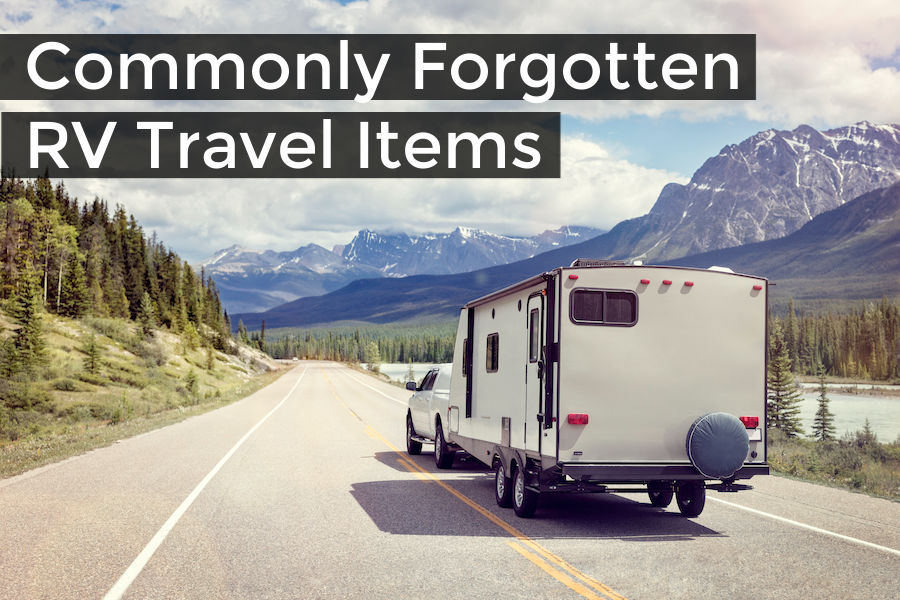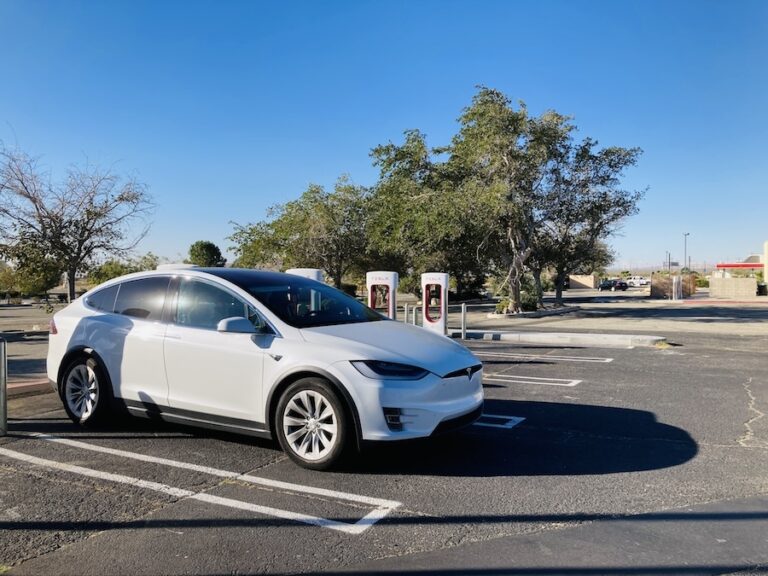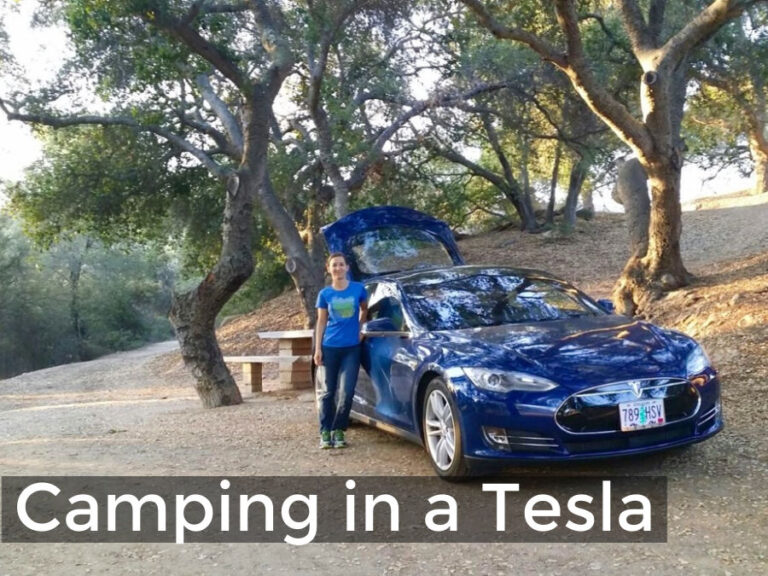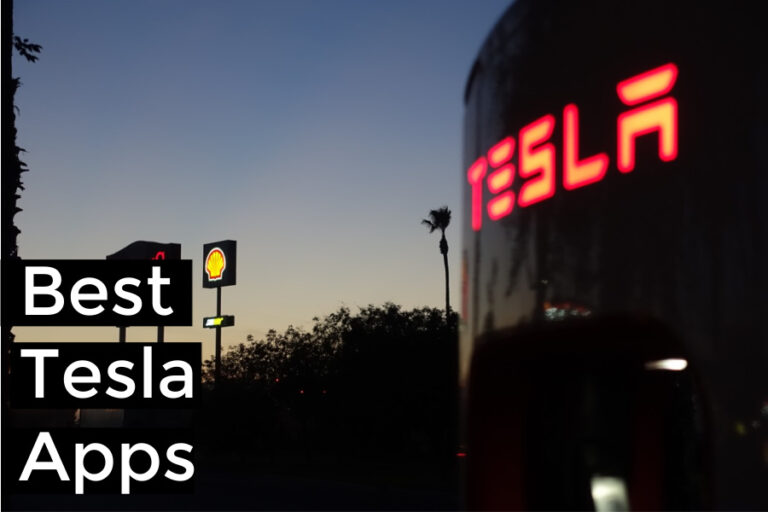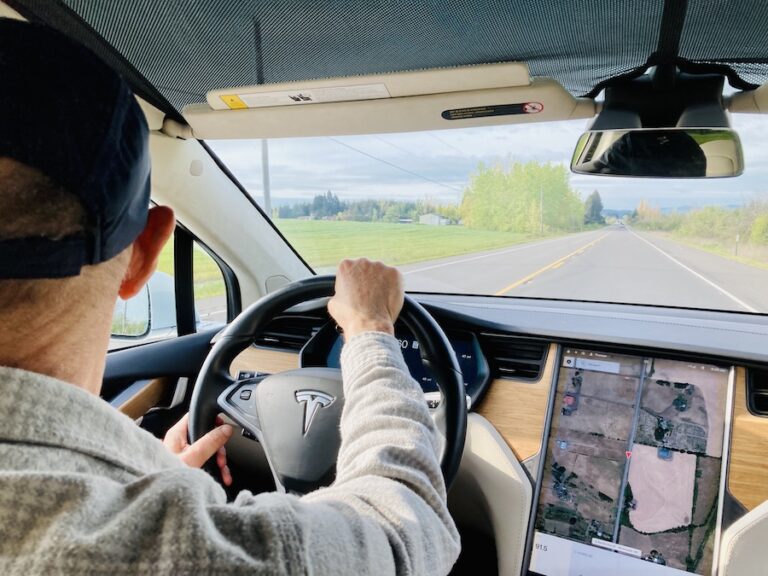Can you tow a Tesla behind an RV?
If you happen to have a large RV, you might already tow a car to utilize when you get to a site.
Once you’ve settled in, you don’t want to use your large RV as an everyday vehicle. How will you get through the In-N-Out drive through if you can’t get in or out?
Using a regular sized vehicle is a lot more convenient for shorter trips or local adventures. And though you can easily tow most internal combustion engine (ICE) vehicles behind an RV, the same can’t be said for EVs. Electric vehicles have unique setups that require more care.
So can you tow a Tesla directly behind an RV? The answer is yes and no. (Remember: this is not the same as a Tesla towing an RV.) Learn more below.
No, you can not directly tow a Tesla behind an RV (by itself).
Can you flat tow a Tesla?
The short answer is no. Due to Tesla’s vehicle design, flat towing a Tesla behind an RV/motorhome is not advised.
What is flat towing?
Flat towing, also known as dinghy towing or four-wheel towing, involves placing all four wheels of the towed vehicle on the road. Flat towing is usually a convenient and cost-effective towing method for RVers with ICE vehicles.
For flat towing, you’ll put the vehicle in neutral and disengage the emergency parking brake so the wheels don’t lock. In a manual car, you would separate the transmission from the driveshaft, reducing wear and tear while towing. Unfortunately, it doesn’t work this way with EVs.
What does Tesla say about towing?
Tesla has established clear and strict guidelines, explicitly stating that flat towing should not be done with their cars.
- Instructions for Transporters Tesla Model 3
- Instructions for Transporters Tesla Model Y
- Instructions for Transporters Tesla Model S
- Instructions for Transporters Tesla Model X
Tesla’s official stance is to use a flatbed trailer for vehicle transport, as towing a Tesla can potentially cause damage if not done correctly. While some other EV models, like the Chevy Bolt, provide guidance on towing with two wheels down, Tesla does not offer such instructions.
Despite Tesla’s blanket policy of no towing, there has been no definitive statement from the company explaining the reasoning behind this stance.
Electric vehicles don’t have a transmission system. Instead, their wheels connect directly to the motor and spinning the wheels generates electricity. This system cannot be disconnected for towing.
The lack of a transmission disconnect, which is necessary for safe flat towing, seals the deal. Flat-towing in neutral without a transmission disconnect will cause problems and lead to expensive repairs.
As AWD becomes standard across Tesla’s vehicle lineup, the possibility of towing even with two wheels down becomes increasingly unlikely (though it has been done, according to Tesla facebook groups).
For RVers looking to bring their Tesla along on their travels, alternative methods of transporting the vehicle are discussed below.
While flat towing may be a convenient choice for towing some vehicles, it is important to consult the owner’s manual of the specific car to determine if flat towing is suitable and safe. Electric vehicles, including Tesla models, generally do not have flat towing capabilities due to their unique design.
But is it possible to flat tow a Tesla and how would you do it?
Tesla does not recommend flat towing and we also don’t recommend it to mitigate any risk to your car and avoid potential costly repairs. That being said, for the sake of dreaming, possibility and nerding out, you CAN flat tow a Tesla. Why would you want to do this:
- Your battery is completely depleted and you have no other options (no tow truck or charger nearby) but you have someone with a vehicle that could tow you for a little bit.
- You just want to see what can happen and don’t care what may happen to your Tesla.
Here’s what you would need to do:
- Find the towing eye tool and connect it to the front of your Tesla.
- Carefully connect your vehicle to a towing vehicle and put the car in drive mode with the regen brake level set appropriately to charge or cruise. Important: the Tesla must have a driver for this to work well.
- Tow carefully with your hazard lights and maintaining constant communication between the two drivers.
What about putting a Tesla in neutral to tow?
Putting a Tesla in neutral and towing it behind another vehicle may seem like a reasonable solution, as it is commonly done with other cars. Again, flat towing a Tesla is not recommended and it relates to potential overheating issues.
When a Tesla is in neutral, the electric parking brake is disengaged. The wheels are not locked, giving the impression that it should be safe to tow.
But the main concern lies in the operation of the cooling system.
In a Tesla, the cooling system is designed to run when the car is turned on. It provides relief to the gears and bearings as they spin and generate heat. Without the cooling system actively operating during towing, there becomes a significant risk of overheating.
The cooling system in a Tesla is responsible for circulating coolant to various components, including the front and rear motors, differentials, and transmission. When the cooling system is inactive, Tesla’s components are vulnerable to excessive friction and heat.
Heat generated from the friction of towing can cause major damage. Parts can get fried.
Repairing or replacing these damaged parts is usually expensive. Warranty is unlikely to cover repairs if the vehicle was flat towed against the manufacturer’s guidelines.
Therefore, understand that flat towing a Tesla while in neutral/without the cooling system operating poses a serious risk of overheating and potential damage to the vehicle.
Tesla explicitly states that all of their vehicles should be towed on a flatbed trailer as the only safe method of towing.
Yes, it’s still possible to tow a Tesla behind an RV with help.
Flat Towing Alternatives for Teslas
So what is the right way to tow a Tesla behind an RV or motorhome?
When it comes to towing a Tesla safely, there are alternative methods available that do not involve flat towing. These options include using a flatbed trailer, towing with dollies, or utilizing an enclosed trailer.
Example of how to load and tow a Tesla Model 3 on a Trailer
Towing a Tesla on a flatbed trailer
A safer method for towing a Tesla is to use a flatbed trailer. In this case, the entire vehicle is placed on the trailer, so none of the Tesla’s wheels make contact with the road.
To begin the process of towing with a flatbed trailer, you will first need to disable any self-leveling features on the Tesla, such as air suspension, through the vehicle’s control menus.
Set the Tesla to the highest ride-height level possible and select the “Jack” option. This turns off the active-suspension system so the Tesla can be moved freely without damaging its suspension parts.
If you are using a towing wench to pull the Tesla unto the flat bed trailer you should use the “Active Transport Mode” setting. This will disengage the parking break and allow the Tesla to move freely at a walking pace. This is also the same mode you’d want to use to push the Tesla if needed. There is no “tow mode” for Teslas.
With assistance, carefully drive the Tesla onto the prepped trailer until it comes in contact with the tire stops. Put the Tesla into park before exiting the vehicle.
Tow chains should be securely attached to the designated points on the Tesla as indicated in the manual.
To protect the underbody from potential damage, it’s recommended to place a 2×4 inch piece of wood between the underbody and the tow chains.
To ensure the Tesla is securely fastened to the trailer, use tie-down straps and chocks to secure the wheels.
It’s important to note that when using a flatbed trailer, the Tesla remains under its original warranty as the wheels are not in contact with the road. This method offers a high level of protection for the vehicle and peace of mind for the owner.
While using a flatbed trailer may require an initial investment, it is a reliable and recommended option for towing a Tesla over any meaningful distance. It is crucial to adhere to Tesla’s instructions and guidelines, as failing to do so may void the warranty or result in damage to the vehicle.
Towing a Tesla with dollies
Another option is towing the Tesla using dollies. This involves attaching front and rear dollies to the vehicle and hitching the main dolly, which lifts the car, to the back of your RV.
With all the wheels off the ground, the Tesla can be kept in “Park” once it’s properly positioned and secured onto the dollies.
Be sure to use high-quality dollies and wheel fastening straps. Especially when traveling over long distances, things could get jostled out of place and that would be a big problem.
Towing a Tesla in a trailer or toy hauler
Towing the Tesla in an enclosed trailer provides maximum protection, shielding it from external elements and road debris.
To tow a Tesla using an enclosed trailer, you will first need to ensure that the trailer you choose is suitable for the size and weight of the Tesla.
Use loading ramps or a hydraulic lift system to get the Tesla into the trailer. Once inside, it should be secured in place.
Of course, using an enclosed trailer for towing a Tesla is the most expensive way to go.
Other Towing Alternatives
- Drive the Tesla alongside the RV if you’re traveling with a group
- Rent a car from a location near your destination instead of bringing the Tesla
- Use your Tesla as the towing vehicle and put a trailer behind it
Ultimately, you should choose the most suitable alternative based on your preferences for cost, convenience, and protection for the vehicle.
What type of RV can tow a Tesla?
Understanding the limits of your RV’s towing capacity is essential.
Most Class A motorhomes are equipped with robust towing capabilities. They can pull weights of 5,000 – 15,000 pounds.
Here are the weights of the different Tesla models:
- Tesla Model X Plaid – 5,390 pounds
- Tesla Model S Plaid – 4,766 pounds
- Tesla Model Y Long Range & Performance – 4,416 pounds
- Tesla Model 3 Long Range & Performance – 4,065 pounds
Standard Tesla models weigh less.
With a flatbed trailer adding additional weight, many Class A motorhomes have sufficient towing capacity to handle this load comfortably.
For Class B or Class C RVs, towing a Tesla on a flatbed trailer is more challenging. These smaller RV classes typically have lower towing capacities, usually around 5,000 pounds or less.
Attempting to tow a Tesla on a flatbed trailer with a Class B or C motorhome may exceed the vehicle’s towing limits and compromise safety. It puts excessive strain on the RV’s engine, transmission, and braking system, potentially leading to mechanical failures and compromising your control of the RV on the road.
You can check your RV’s owner’s manual or contact the manufacturer to determine the specific towing capacity of your vehicle.
If you own a motorhome and a Tesla, it would definitely be worth towing it on a trailer. Teslas are great everyday vehicles to begin with so it would be nice to have with you on trips when you get to an RV site, especially if you were to hunker down for awhile.
As with most of these situations, make sure to do additional research and follow necessary instructions as all vehicles, motorhomes, or trailers have their own safety requirements and directions.
Let us know more about your experience and recommendations for towing a Tesla in the comments!
